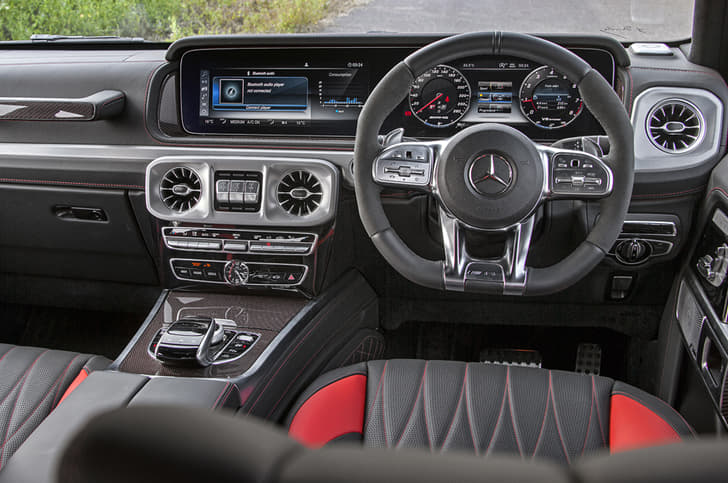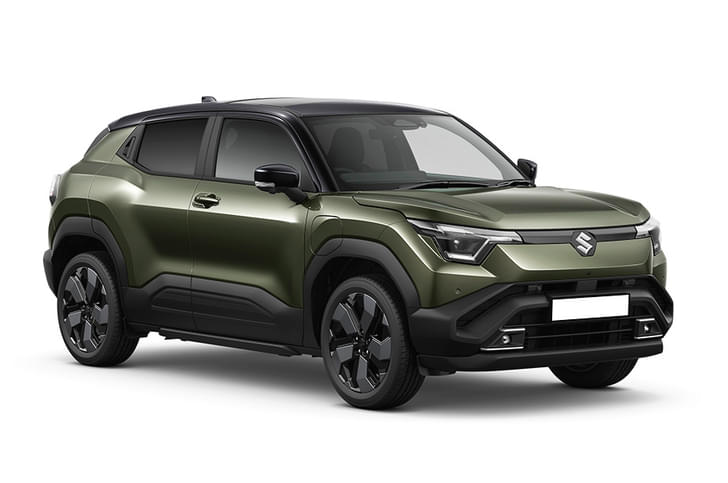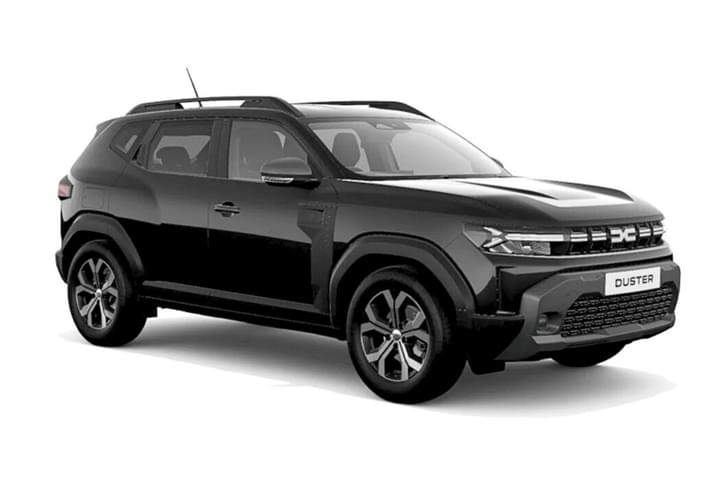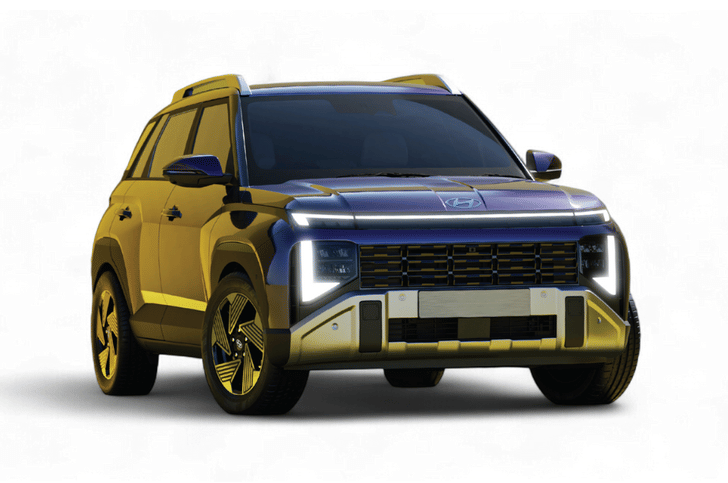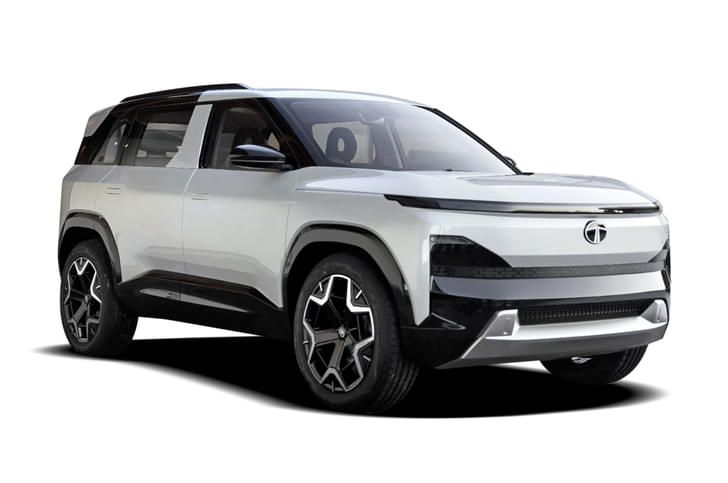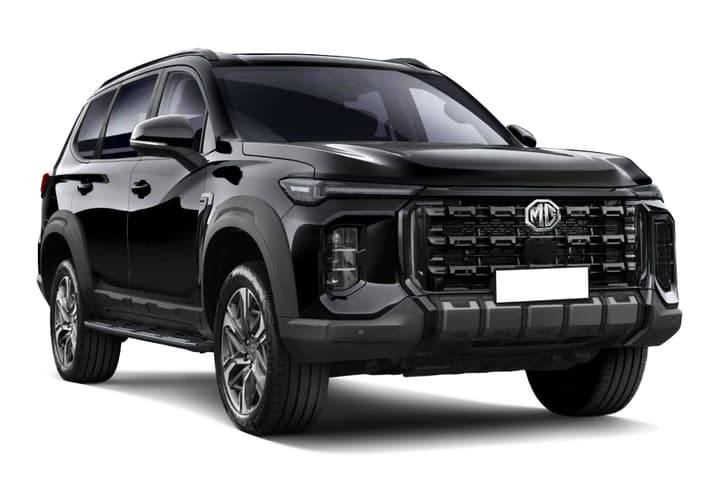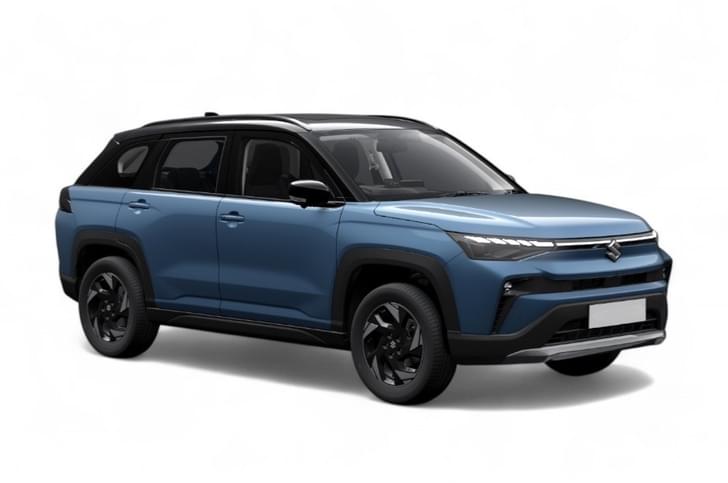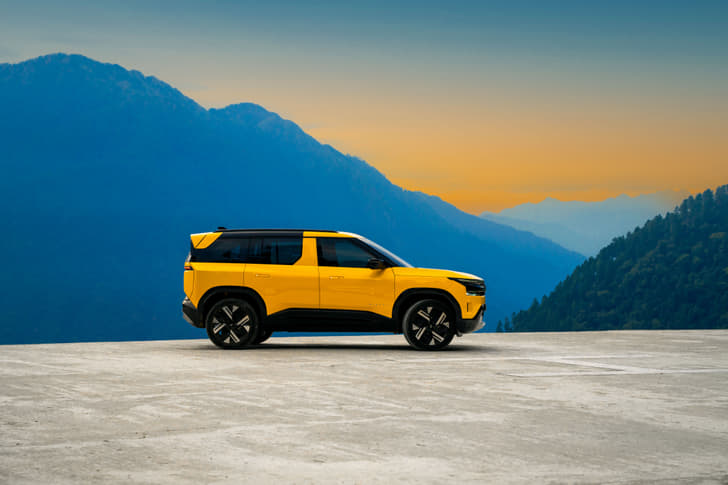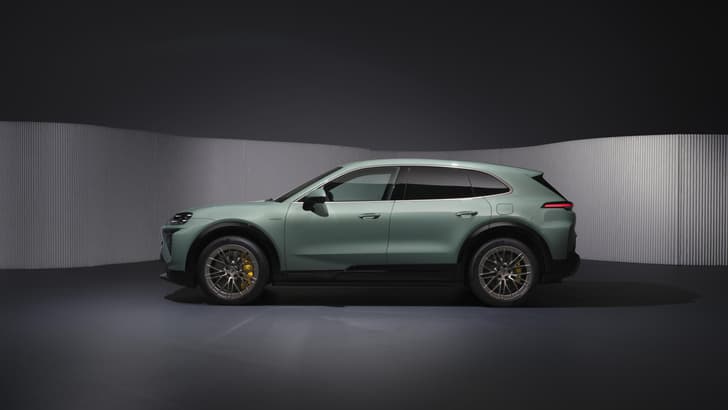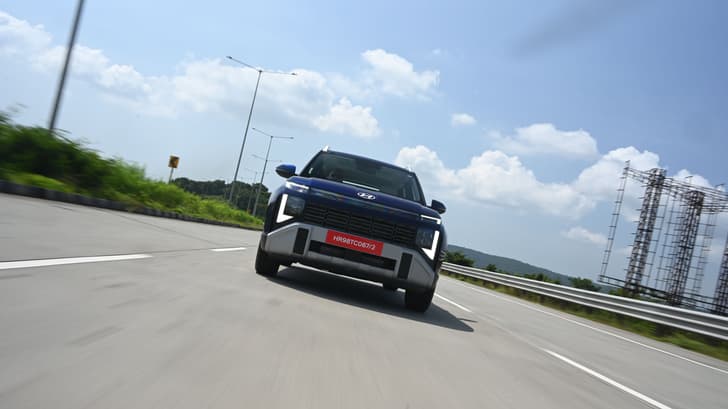For Hyundai to name its new hatchback ‘Santro’ is a show of great confidence from the Korean brand, and it’s not hard to see why. The Santro was the brand’s first car in India, and one that’s taken a strong place in the Indian people’s hearts and minds. Moreover, it was the first solid mass-market alternative to the might of Maruti Suzuki – fresh in design, high on quality, tremendous on space and, yet, rather good value; and it set the template for all Hyundais that would follow. The other thing that resounded with Indian buyers was the term Hyundai coined – ‘tall boy’, which went on to represent not just the Santro, but a whole segment of cars (like the WagonR) which used their height to maximise space. That’s some legacy, but the Santro was eventually superseded by the i10 and the Grand i10, which were bigger and better. In its final Santro Xing avatar, it lived on in lower segments (you’ll still see hundreds of them running the streets of Mumbai as taxis) but was given the axe at the end of 2014.
What is it?
The Santro was so successful that it reached 1.86 million households globally and 1.32 million in India. Hyundai is really aiming to achieve high numbers with this new hatchback, hence the company has invested Rs 700 crores (or roughly 100 million USD) towards this new project.
The all-new Santro’s structure uses 63 percent advanced high-tensile steel and high-tensile steel, which not only ensures adequate rigidity, but keeps the kerb weight in check too, which is in the sub-one-tonne region – in the whereabouts of the Celerio, but lower than the Tata Tiago. This car is 45mm longer and 120mm wider than the older Santro and sits on a 20mm longer wheelbase too.
Many expected a return to that tall-boy silhouette, but that’s not quite what’s happened. Sure, it is tall, giving it a stance more akin to the Grand i10 – which makes sense, as it shares the (K1) platform seen on the Grand i10. The look, too, is a lot like the Grand i10 – angular, swept-back headlamps mounted high-up and Hyundai’s new ‘cascading’ grille below.
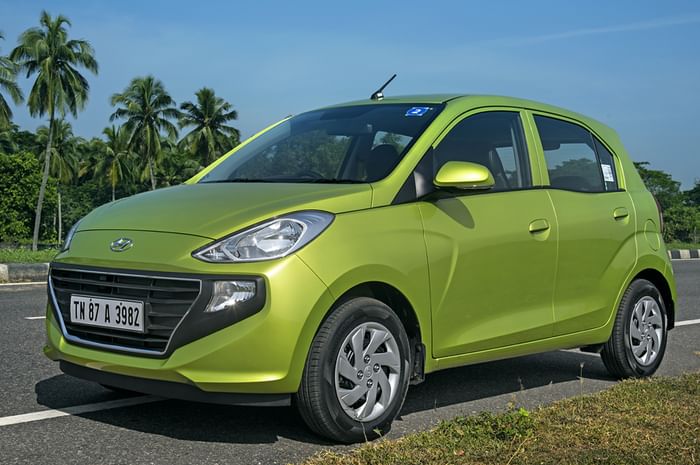
The grille, however, extends even wider and encompasses the high-mounted fog lamps too, making it look disproportionately large. The car’s designer, Sangyup Lee, says the grille is partly functional (for better cooling in our conditions) and partly to give the face some drama. Frankly, it’s a bit too dramatic for a typically conservative budget car buyer; but then the original Santro’s oddball styling was even more radical for its time and that didn’t deter people from buying one, back then.
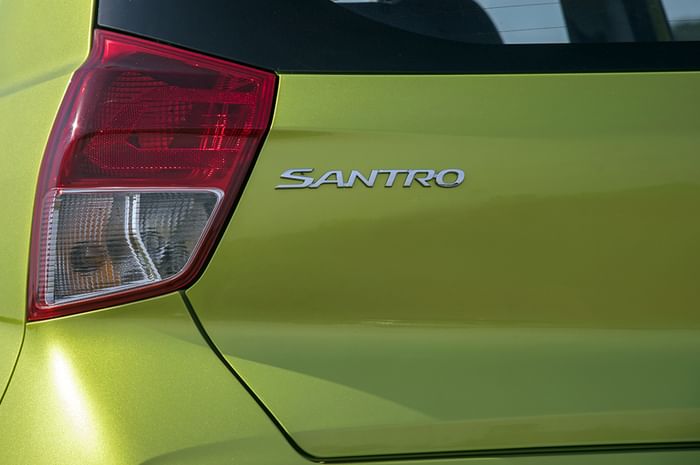
There’s some of this deliberate drama at the side in the form of boomerang creases over the front-wheel arch, and that over the rear-wheel arch, which add some flavour to the side profile and make the car appear visually squat. Another interesting detail is the shoulder line that dips down on the rear door (Lee says this was to add an element of style as well as increase the glass area), leading to a set of small and simple tail-lamps. What livens things up, however, is the blacked-out section at the base of the bumper that mimics a diffuser and houses the rear reflectors. Overall, it looks like a pretty upmarket design, as do most Hyundais, but there are signs that the Santro has been designed to a cost. For one, the rear door frame varies in thickness around the quarter glass; and while its outer edge is smooth, its inner edge is very sharp. It sticks out like a sore thumb on an otherwise sleek-looking car. More obvious are the budget-looking flip-type door handles which hark back to the original Santro. A push-pull design handle (which even the Celerio has) feels more premium and should have been considered as this is a customer’s first point of contact with the car.
What is it like inside?
For its price and segment, the way Hyundai has chosen to spec the new Santro is immensely impressive. There is a ‘wow’ factor the moment you step inside the cabin, and that’s mainly due to the sense of quality it exudes for the budget car it is. The dual-tone beige-and-black dashboard boasts of high levels of fit-finish and feels much nicer and airier than the optional all-black theme. The dashboard’s pièce de résistance is the 7.0-inch touchscreen infotainment system loaded with Apple CarPlay and Android Auto, and functions very slickly. The infotainment screen doubles as a reversing camera in the top-spec Asta variants – which, by the way, are available only with the manual transmission. There are buttons to the right of the steering column to power-adjust the outside mirrors (themselves with LED turn-indicators built in). Several bits like the buttons on the steering and the stalks are carried over from the Grand i10; which is not a bad thing, as their quality is top-notch. The dials are crisp and appear very sporty with the speedo needle resting at a zero-degree angle, and there’s also a detailed MID, displaying useful information like average fuel economy, average speed and distance to empty; apart from the trip computer data. The air-conditioner’s control knobs are a bit sticky; but like the rest of the switchgear, they feel hardwearing and chunky. The dull-gold finish on the accents surrounding the steering wheel, gear lever, AC vents and door handles looks classy whilst the round and sporty looking side air-vents resemble those seen on some Mercedes models and is another upmarket touch.
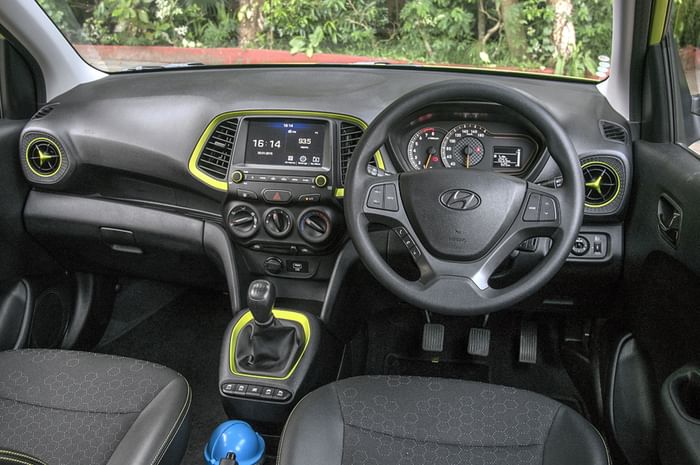
Many of the cost-saving efforts are subtle and largely inconsequential – like the Hyundai logo on the steering finished in grey plastic, not chrome, the exposed screws inside the interior door grabs, and the fact that there are only two parking sensors at the rear. There are some missing features that are a bit inconvenient – like no height adjustment for the front seats and seatbelts, the lack of any adjustment for the steering, and the fact that there is no external release for the tailgate. You can open the boot either with the key, or reach for the lever in the driver’s footwell. Finally, it’s things like the front and rear fixed headrests, the lack of a door lock/unlock button, and the missed opportunity for more stowage space next to the handbrake, which range from annoying to a bit unsafe. Even the placement of the power-window switches placed beneath the gear console is a measure to save costs, and it’s inconvenient that these aren’t back-lit. For all its talk of safety, Hyundai discriminates against those on a budget with only a single front airbag. It’s the pricier Asta version that gets two front airbags.
The car’s iconic tall and narrow proportions aren’t quite there anymore but that doesn’t mean the new Santro is low on interior room. Quite the contrary, this new car is larger in every dimension compared to the older car – save for headroom, of course. Users will love it for ease of ingress and its tall seating position.

The car’s front seats do remind you of the ones in the Eon. They’re slim (with fixed headrests, as mentioned earlier) but they have just about enough contours to allow you to get comfortable. Only broader passengers might find them lacking shoulder support. However, the lack of height adjustment for the driver’s seat – and no adjustment for the steering – means that tall drivers, in particular, will find the seating position awkward; the seat is too high and the steering, too low. All-round visibility is nice, though, thanks to the tall glass area and low window line.
The amount of leg-, head- and even shoulder-room in the back seat is really impressive for a car of this size. The back seat is flat and bench-like, which is good if you want to sit three abreast; and we particularly liked the generous under-thigh support that’s been built along with a high ‘hip’ point. It all adds up to making the back seat one of the most comfortable around. Hyundai has thrown one over the competition by slipping rear air-con vents in the Santro – a segment-first feature. The air-con itself is possibly the best in class and chills the cabin rapidly, despite the huge glass area.

There may be only one cupholder in the front but otherwise there’s a huge amount of storage in the cabin. The cubbyholes in the centre console are very useful and there’s a decently sized glovebox, as well; but what we particularly liked is the very practical and useful shelf with a rubberized finish to hold your phone and other loose items, which you need to regularly access. Each door gets a full-size bottle-holder and the parcel shelf also has enough depth to hold odds and ends. The boot has a very high-loading lip, but it is at par with the class; you could probably get one medium-sized suitcase and a few small soft bags in there.
What is it like to drive?
Although the platform is a new-generation one, the engine is not. It’s not the 1.0-litre (Kappa II) engine from the Eon, but instead, is the same 1.1-litre Epsilon engine (G4HG) that was in the old Santro Xing and in the original i10. This is likely for cost reasons, as the Kappa II engine (though a cylinder down on the Epsilon) uses four valves per cylinder and variable valve timing. In this latest state, the 1.1 Epsilon makes 69hp and 99Nm of torque (almost the same as the 1.0 Kappa engine), which is at par with Maruti’s 1.0-litre K10 engine, albeit lower than Tata’s 1.2-litre Revotron. The 20.3kpl ARAI-rated fuel economy figure is lower than both rival engines, although in the new Santro, it remains the same whether you opt for a manual or an AMT. That’s right, you can have this car with a 5-speed AMT as well – Hyundai’s first-ever attempt at one.
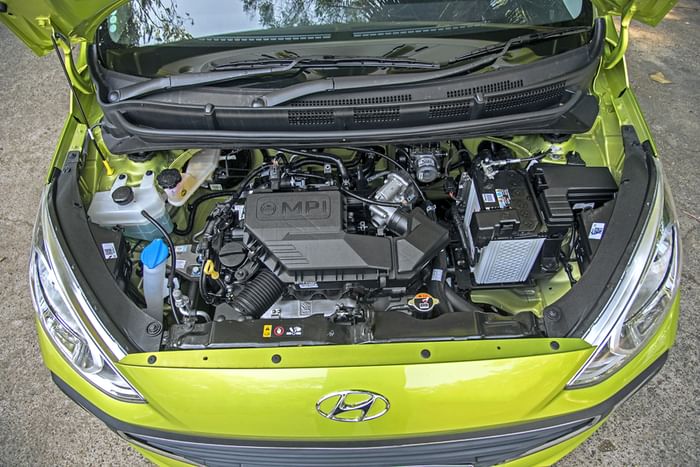
Fire-up this engine and you’ll immediately appreciate its refinement. Vibrations are almost non-existent, whether at idle or on the move. The engine is pretty responsive and just like the original Santro, it’s a zippy car to drive around town. Driveability and a strong mid-range are this engine’s forte; and you don’t need to change gears that often, which makes it quite user-friendly to drive. Even when you do have to row the stubby gear lever, its hardly a chore. The light clutch and gearshift is effortless to operate.
Those used to driving in higher gears at lower revs will love the fact that performance is available from as low as 1,000rpm and remains strong throughout the mid-range. It’s only when you cross the 5,000rpm mark that it tends to sound a bit strained and coarse. This engine doesn’t like to be revved and feels best in the lower reaches of the powerband. Though power delivery is largely seamless – you can feel mild flat spots which can be blamed on engine calibration, since the new engine has been tuned for future BS-VI regulations.
Coming to the automated manual transmission (AMT), this is Hyundai’s first in-house-developed AMT and it’s a brilliant first effort. The big pauses between gearshifts (a fundamental flaw of an AMT) have been smoothened – although not eliminated. Compared to a conventional automatic transmission, the shifts are still slow, especially between the first and second gear. Flex your right foot, and the AMT is quick to respond by shifting down a gear, too. However, all’s not perfect, and there are times when the AMT holds revs for higher than required up to 4,500-5,000rpm, making the engine sound strained. Flat-out, it will hold revs till 6,200rpm. What’s nice is that there is a Tiptronic mode present, to shift gears manually.
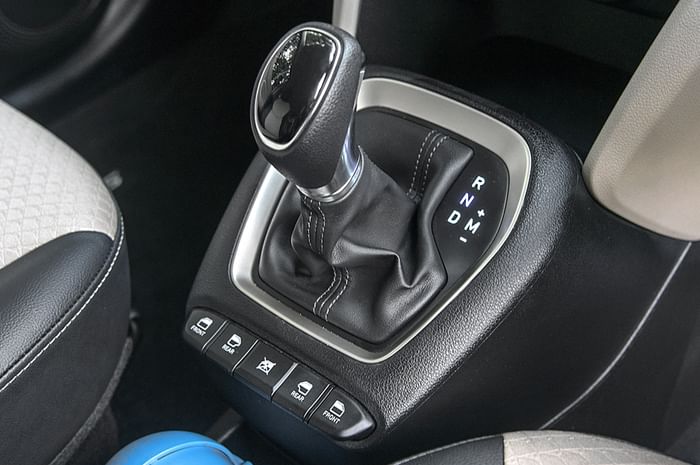
Ride comfort is one of the highlights of the new Santro. It takes on bad roads very competently and absorbs bumps with a sense of maturity; it’s only the sharp bumps that filter through. Even this car’s dynamics are very refined and it can confidently take corners without feeling unsettled or unnerving. The steering, typical of a city car, is light yet very consistent in its behaviour. It isn’t bristling with feedback, but you’re always aware of what’s happening at the front end. The turning radius is tight and manoeuvring this car through traffic is effortless. The only small issue we had is that while taking U-turns, the steering doesn’t self-centre easily and needs the driver to bring the wheel back to the straight-ahead position.
Should I buy one?
To put the new Santro into perspective, it’s first important to remember how much the market has grown since the time of the original Santro. This is no longer the entry-level car the Santro Xing was until it was discontinued in 2014. This is not a rival to the Maruti Alto or Renault Kwid either, as the Eon was conceived to be. This isn’t a replacement for the old Santro, but it’s really a replacement for the discontinued i10 and goes up squarely against the Celerio, Wagon R and Tiago.
Since it’s not a full-on premium hatchback, you can see where Hyundai has made some compromises to keep costs in check. Apart from an old-generation engine, there’s a raft of smaller cost-cutting measures; but those aren’t really deal-breakers. Instead, what the Santro brings is a certain ‘wow’ factor which has been seriously lacking in this segment, so far.
The design is bold, its hugely spacious for its size and class, and above all, its been lavished with features and equipment never seen in the budget hatchback segment before. The well-designed touchscreen is, of course, the master stroke – but there’s also stuff like the rear camera and sensors that make you feel like you’ve gone a segment higher. At a price of Rs 3.90-5.45 lakh (ex-showroom, India) for the petrol version (CNG costs extra), the new Santro may seem expensive – especially the pricer automatic variants – but it gives you your money’s worth. Even though it may have shed the original car’s tall-boy look, it’s clear that this new Santro embodies the same core values as its predecessor.










